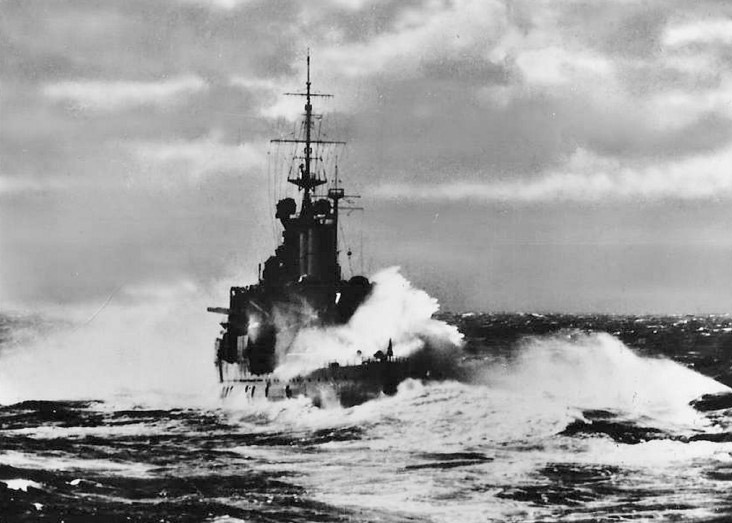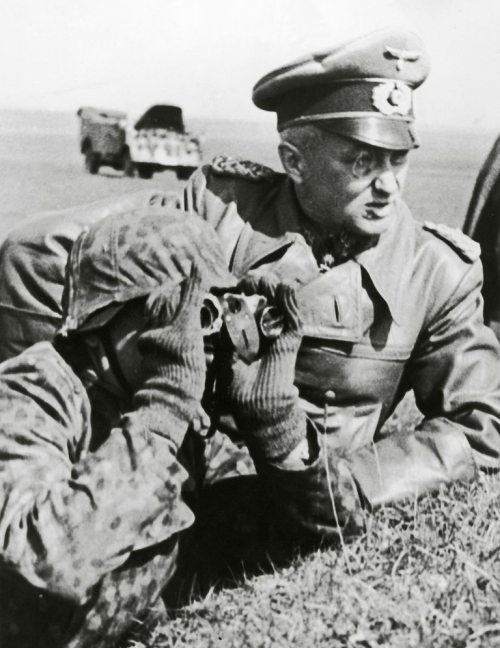Our Searchlight on the War
The War Illustrated, Volume 4, No. 88, Page 475, May 9, 1941.
Eyes and Ears of the R.A.F.
In future, by approval of the King, the Observer Corps is to be known as the Royal Observer Corps, in recognition of valuable services rendered over a number of years. The Corps is a civilian organization consisting of some 30,000 watchers, all volunteers, most of whom do this work of 'plane-spotting in their spare time. There are observer centres over the entire country, each controlling a number of posts, some in very isolated parts of the area. At these posts a day and night watch is kept for sight or sound of aircraft. Every aeroplane, whether hostile or not, is subjected to careful scrutiny. If it is an enemy the alarm is quickly given by telephone to headquarters, and the course of the aircraft is plotted by means of a special instrument. The Fighter Command, acting on this information, sends up its 'planes to meet the raider. If the night shift of Observers are made aware by their sound locator of the presence of an aircraft they determine its position and inform the searchlight unit, which speedily picks it up. Then the A.A. batteries come into action, and one more raider has run the gauntlet of Britain's defences all set in motion by the lonely and devoted civilian watchers in their far-flung outposts.
Salvage Great and Small
Bombed buildings are furnishing many tons of steel scrap which will be melted down to provide new war weapons. But minor raid debris is also being put to good skill and ingenuity are only equalled by their sympathetic understanding. The staff of Fulham A.R.P. depot have become toy-makers in their spare time. Answering an appeal made some six weeks ago by the Nursery Schools Association on behalf of evacuated children who have nothing to play with, they set to work to convert valueless odds and ends from the dumps into dolls' cradles, horses and carts, trains, ships and aircraft, as well as small-size chairs and tables for the children who would otherwise have nothing but the floor on which to sit and to play. Nurses at the First Aid Post attached to the depot have scrounged bomb-damaged bed linen, and with this have equipped the toy beds that will soon delight the eyes of little children in the reception areas.
Help from U.S. Doctors
The British Red Cross recently sent a telegram to the sister society in America pleading for 1,000 doctors to serve in Britain with the R.A.M.C. and the Civilian Emergency Medical Service. Mr. Roosevelt, as President of the American Red Cross, launched the appeal, which had an instant response. Within 24 hours 200 doctors had applied. One flew to Washington to be among the first to volunteer. Another wired, "Bags packed. Ready to leave. When and where shall I report?" For service with the R.A.M.C. the Red Cross asked for doctors under 40 years of age. Doctors up to 45 will be taken for Emergency Medical Service. Applicants are asked to serve for a minimum of one year and will retain their status as American citizens. They will be given British registration and parity with British medical men. It has been pointed out how vastly greater are the demands on the medical services in Britain today than in the last war.
The Nazis May Miss It
One more London landmark, the single remaining tower of the Crystal Palace, disappeared on April 16. The Palace, a glittering monument of the Victorian Age, constructed mainly of glass and iron, was originally the habitation of the Great Exhibition in Hyde Park, opened by Queen Victoria on May Day, 1851. It was designed by Joseph Paxton, gardener and architect, who used as model the conservatory he had designed for Chatsworth. The great water towers at either end were built by Isambard Kingdom Brunel. Removed and rebuilt on Sydenham Hill in 1852, the Palace became the home of great musical festivals, animal shows and educational exhibitions of many kinds, including a permanent one depicting the architecture of all ages and countries. There were rare plants in the indoor gardens, and in the elaborately laid out grounds, where the startled visitor encountered antediluvian monsters, the firework displays originated by Brock became famous. In 1914 the Palace was taken over by the Admiralty as a recruiting centre for the R.N.V.R. and other units, and over 125,000 men were trained there. In June, 1920, it became the property of the nation, and here, on June 9, King George V opened the Imperial War Museum, later removed to South Kensington. In 1936 the Palace caught fire, and all but the North Tower was burnt out. Now, because this was a prominent landmark for enemy airmen, and also on account of the valuable metal it will furnish, this giant survival of a peaceful and prosperous epoch was brought crashing down to earth in a matter of some ten seconds.
Girls in the Firing Line
Girls of the A.T.S. are now to be found behind the A.A. guns helping to fight the Battle of Britain. In their charge are the range-finders and predictor calculating machines, on the skilled use of which the accuracy of the gunfire largely depends. All these girls are mathematical experts who have taken a special course in range-finding and other scientific observations relating to predicted fire. Women may also be taking over the balloons, and the North Midlands area is to make the first experiment in this scheme. If it is successful large numbers of men will be released and replaced by girls of the W.A.A.F. As the work is arduous – it will include driving the winches and trailers and hauling on the ropes – only the strongest and fittest recruits will be accepted.
Bombs Ready for Rome
His Majesty's Government announced on April 18 that, in view of the German threats to bomb Athens and Cairo, it must be clearly understood that if either of these two cities were molested a systematic bombing of Rome would begin. Moreover, the Government was perfectly well aware that an Italian squadron was being held in readiness to drop captured British bombs upon the Vatican City should a British raid take place. As the strictest orders had been given that the utmost care must be taken to avoid any damage to the Vatican City, it was necessary to expose in advance this characteristic trick of the Italian Government. Rome's reaction to this disclosure was one of great annoyance, and the whole of the Axis radio and press embarked on a new campaign of vilification against Mr. Churchill.
Previous and next article from Our Searchlight on the War
Our Searchlight on the War
French Ships to be Demobilized After France surrendered there arose problems concerning the future of three French naval vessels – the aircraft carrier "Béarn", the cruiser "Emile Bertin", and the
Index
Previous article
'Her March Is O'er the Mountain Wave'
H.M.S. Renown, flagship of Vice-Admiral Sir James Somerville, in command of the Western Mediterranean Fleet, is here seen ploughing through a heavy sea during one of those recent sweeps of the Medit
Next article
Just What Are There 'Panzer' Divisions?
What is this mighty instrument of war that the Germans, if they have not invented at least have developed to an unprecedented degree – this armoured force which smashed its way across Poland, Franc






